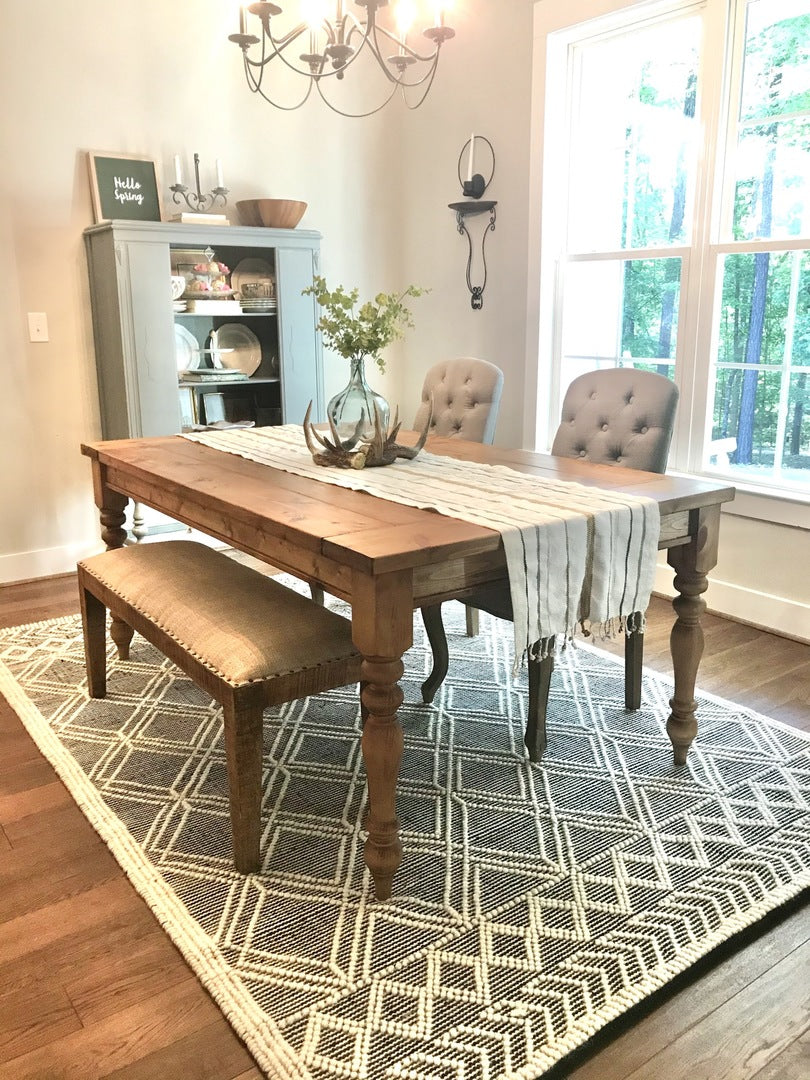Distinct Dining Room Table Legs to Change Your Eating Area
Distinct Dining Room Table Legs to Change Your Eating Area
Blog Article
A Thorough Check Out Dining Table Leg Styles: Locating the Ideal Suit
Choosing the appropriate dining table leg design is vital for both aesthetic appeal and functional functionality. For those with larger tables, trestle legs guarantee strong support, whereas hairpin legs introduce a mid-century contemporary ambiance with their minimalist style. The x-shaped legs blend contemporary style with enhanced stability.
Standard Four Legs
Among the various kinds of eating table leg styles, the typical four-leg layout stays a classic selection for many families. This traditional configuration provides an unified mix of capability and aesthetic appeals, making it a perennial fave. 4 legs provide well balanced assistance, guaranteeing the table stays stable and with the ability of bearing substantial weight. This is particularly beneficial for homes that frequently organize huge events or utilize their table for multiple purposes, such as work or crafting.
From a visual perspective, the standard four-leg layout can be easily adapted to numerous indoor designs. Whether crafted from wood, metal, or a combination of products, these legs can be delicately sculpted, smooth and minimalistic, or anything in between. Their convenience allows them to enhance both rustic and contemporary setups perfectly.
Moreover, the uncomplicated structure of the four-leg design assists in ease of movement and placement within an area. Unlike more complex bases, this design minimizes blockages, providing ample legroom for diners. In recap, the conventional four-leg table leg design weds withstanding sophistication with sensible functionality, making it an astute selection for those looking for both form and function in their eating furnishings.
Pedestal Base
Often commemorated for its elegant and space-efficient style, the pedestal base is a prominent option to the standard four-leg configuration in table leg designs. This distinctive base usually includes a solitary central column sustaining the table top, which can vary in type, from ornately carved timber to sleek, contemporary metal. One of the primary advantages of the pedestal base is its capacity to optimize legroom and seating flexibility. Without edge legs, diners are paid for better liberty of activity, making it an ideal selection for round and oblong tables that promote more intimate and inclusive events.
The central column itself provides a canvas for intricate layouts and creative expressions, including an element of aesthetic interest under the table. In summary, the stand base incorporates capability with style, making it a refined and practical alternative for varied dining atmospheres.
Trestle Legs
Trestle legs supply a robust and classic foundation for dining tables, characterized by their straight cross-bracing and strong support light beams. Stemming from middle ages times, this layout has developed yet retained its necessary structure, making it a perennial fave why not look here in both conventional and contemporary setups. The central trestle light beam, usually sustained by two or more vertical articles, supplies extraordinary stability, allowing for larger table lengths without the need for added legs.
A substantial advantage of trestle click to read more leg tables is the sufficient legroom they supply. Unlike tables with 4 edge legs, the lack of obstructions at the table's sides offers unobstructed area for chairs and diners, boosting convenience and ease of access. This makes trestle tables suitable for fitting larger events, whether in a dining area or a banquet hall.
From rustic farmhouse to smooth contemporary styles, trestle legs can be tailored to match specific preferences. Their long-lasting charm and useful advantages make trestle legs an engaging selection for those looking for both design and usefulness in their eating table.
Barrette Legs

The appeal of hairpin legs depends on their simpleness and convenience - dining room table legs. Offered in a variety of materials, including steel and brass, they can be completed in countless colors to match different indoor styles. Whether combined with a rustic wood table top or a contemporary glass surface, hairpin legs effortlessly mix capability with a touch of vintage charm
Longevity is another noteworthy function of hairpin legs. In spite of their fragile look, these legs are crafted to birth substantial weight, guaranteeing the eating table remains steady and safe. In addition, they are reasonably very easy to install, making them a popular choice for do it yourself enthusiasts and professional furniture makers alike.
X-Shaped Legs

Constructed from materials such as steel, wood, or a mix of both, X-shaped legs can be customized to match different layout choices. Steel legs frequently provide a streamlined and commercial feeling, ideal for loft-style houses and contemporary eating rooms.
Moreover, the engineering behind X-shaped legs guarantees even weight distribution, lessening the threat of tottering and enhancing sturdiness. This makes them especially appropriate for bigger eating tables that need added assistance. Essentially, X-shaped legs mix functional design with modern-day aesthetics, making them a timeless choice for varied dining atmospheres.
Final Thought
A detailed understanding of table leg styles reveals the distinct features and benefits of each layout. Typical 4 legs use stability and timeless appeal, while pedestal bases give legroom and a streamlined look. Trestle legs ensure durable assistance for bigger tables, and hairpin legs introduce a mid-century modern aesthetic. X-shaped legs incorporate modern style with enhanced security. Picking the appropriate leg style useful source makes certain both useful and aesthetic fulfillment in any eating area.
Report this page